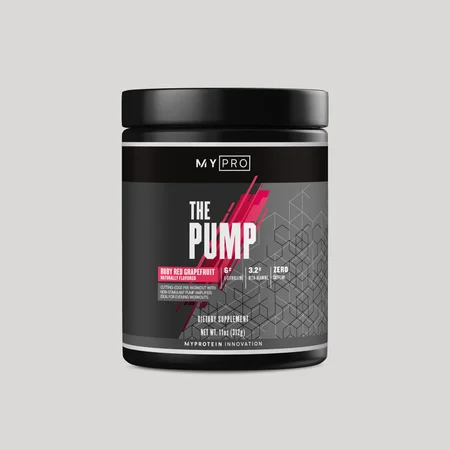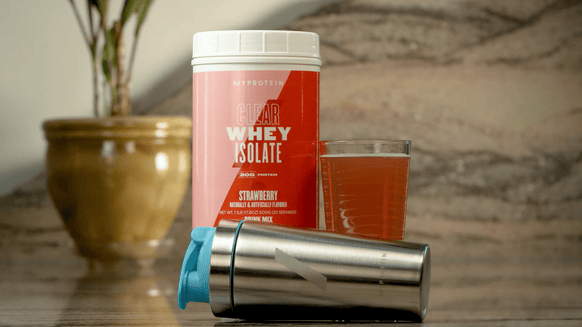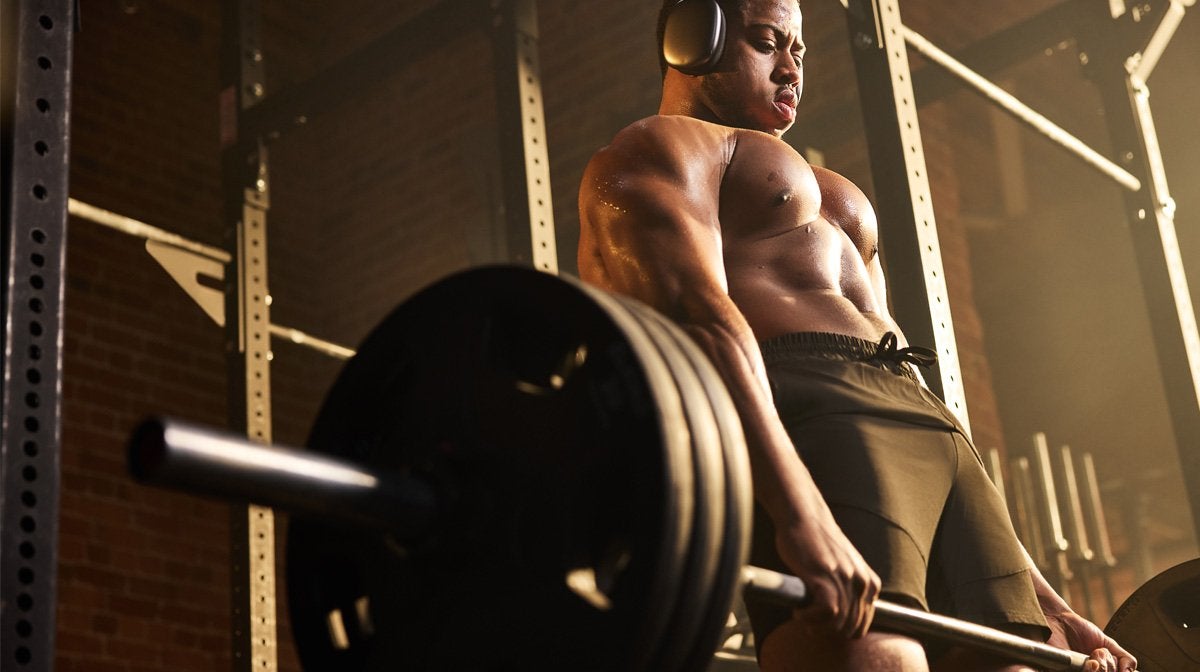
There are so many ways to approach your workouts, but what’s most likely to lead to success is coming up with an approach that fits your lifestyle and exercise goals.
Your workout split, the way you choose to arrange your sessions, can make all the difference to making your training sustainable and getting the results you want.
- Full-body workout split
- Upper-lower workout split
- Push-pull-legs workout split
- Bodybuilding workout split
- Five-day workout split
- Hybrid workout split
- Hyrox workout split
What is a workout split?
So, what is a workout split? Basically, it's how you organize your workouts over a week of training, and there are so many different splits to choose from.
The most common approach is to focus on specific muscles or areas of the body. For example, Monday might be dedicated to legs while Tuesday could be devoted to arms. But there are a number of other ways to going about splitting your training. Let’s take a look at them.
Benefits of exercising according to a workout split
The great thing about workout splits is you can tailor them to work around you, your schedule, and your goals, and really dial into your training of certain muscle groups. The main benefits are:
- Effectively targeting muscles through progressive overload.
- Adequate rest and recovery between workouts.
- Ability to widen the range of exercises and training styles over the program.
- Lower chance of injury, overtraining, burnout, and fatigue.
- Targeting certain muscle groups one at a time allows for more strength and growth, with more time available to try a range of different movements alongside greater recovery periods between training, which also reduces the risk of overtraining and injury.
Does a workout split apply to just resistance training?
Workout splits are usually associated with strength and resistance training. That said, you could apply the principle to other styles of training or experiment with splits when preparing for an event that requires a mixture of resistance and cardio.
What to consider before picking a workout split?
When deciding on your workout split, you’ll want to make sure that it’s going to cover a variety of factors most important to your training:
Your training level
If you’re brand new to training or returning after taking some time off, start slowly and build up slowly as you get stronger and fitter.
If you’ve never trained before, it might be worth looking at full-body splits while you get to grips with things. If you have some gym experience, a 2–3-day split might be a good way to ease yourself back in.
Your goals
Whatever your goal — getting fit, losing weight, building muscle — it’s important to tailor the workout split to work towards this goal. There are so many options and ways to customize your workouts that fit your goal.
Your availability and commitments
We all want to smash our fitness goals, but busy schedules often get in the way. Workout splits provide one way around this, allowing you to make your training as time efficient as possible while helping to keep you committed and focused.
Your recovery and rest needs
We often want to see results ASAP, but you need to give your body time to repair. Splits are great as they give you plenty of time for recovery.
Your weaknesses
We love to work on what we’re good at but overlook weaknesses. Split training is a great way to iron out those weaker movements or muscles and put some dedicated time into improving them.
Different types of splits
Full-body workout split: The best plan for beginners looking to learn movements and optimize time.
Upper-lower workout split: A great way to split your training into two broad categories.
Push-pull-legs workout split: A movement-based split that brings variety in exercises while building muscle and strength.
Bodybuilding workout split: A challenging split that targets specific body parts.
Five-day split: A plan that has you working out five times a week, ideally focusing on different muscle groups, but beginners may prefer to begin with a full-body approach.
Hybrid workout split: A great way to merge splits or incorporate different training styles or sports.
Full-body workout split
What is it?
A full-body split is exactly what it sounds like — a selection of full-body workouts split across the week. It’s a great plan for beginners looking to learn movements and optimize time, ideally working out around 3-4 times a week.
Workout guide
For full-body splits, you want to focus on exercises that train the large muscle groups of the upper and lower body in one session — think big, compound movements.
If you have time, add on a few arm and ab movements to encompass everything. Rep ranges will depend on your goal, but you will want to be hitting 8-12 reps over 3-4 sets.
Benefits
- Simple and easy: Full-body splits usually only involve one or two exercises per muscle group.
- Quick recovery: With the right programming, your muscles can get the rest they need to repair and get stronger.
- Time efficient: A great split type for those who have limited time but want a good workout.
Drawbacks
- Lack of variation: Hitting all of the body means the choice of exercises can be limited.
- Missing muscles or movement patterns: It’s easy to miss smaller muscle groups due to the focus on larger movements.
- Lack of or too much stimulus: As a beginner, you’ll gain quickly, but full-body workouts can lead to lack of progressive stimulus over time.
Full-body split example workout plan:
| Monday | full-body workout |
| Tuesday | rest |
| Wednesday | full-body workout |
| Thursday | rest |
| Friday | full-body workout |
| Saturday | rest |
| Sunday | rest |
Upper-lower split
What is it?
This style of split involves separating workouts between the upper and lower body. On upper-body days, exercises will hit major chest and arm muscles, and on lower-body days, the focus will be on legs and possibly the abs, depending on how you arrange your training.
Workout guide
The end goal of the program (eg strength and power) will help you determine how to tailor your reps, but you want to stick to around 6-12 reps over 3-4 sets (compounds) or 8-15 reps over 3 sets in rep ranges, working at around 70-80% of your 1RM.
Make sure to have large, hard-hitting compound movements at the beginning of sessions, leaving isolated and accessory movements towards the end.
Benefits
- Mix things up: A great way to be versatile with your training, similar to a full-body split, but also focused enough to get results.
- Good blend of frequency and volume: You can train the same muscle groups with enough frequency and volume to see results.
- Easy and simple: With half your time dedicated to one focus and half dedicated to another, it’s a an easy plan to follow.
- Recovery: Allows enough rest before repeating muscle groups.
Drawbacks
- Time intensive: Upper days in particular can take a while to complete due to the number of muscles in the upper body.
- Soreness: As sessions are intensive, this split can lead to increased soreness. So you’ll need to figure out your nutrition and recovery plans.
Upper-lower split example workout plan:
| Monday | upper |
| Tuesday | lower |
| Wednesday | rest |
| Thursday | upper |
| Friday | lower |
| Saturday | rest |
| Sunday | rest/active recovery |
Push-Pull-Legs split
What is it?
Push-pull-legs split breaks down your training into three distinct sessions.
Push: A selection of upper-body exercises that require a “push” movement, typically targeting the chest, shoulders, and triceps.
Pull: A selection of upper-body exercises that use a “pull” movement, usually targeting the back and biceps.
Legs: A selection of exercises targeting the lower body.
Workout guide
For push-pull-legs, you’ll generally follow a three or six-day split, with recovery between sessions. Focus on big compound movements at the start, add in accessories towards the end, and include core movements on any day. Rep-wise, compounds should be around 6-10 over 3-4 sets and accessories around 8-12 over 3 sets.
Benefits
- Builds muscle and strength: This split is great for effectively building muscle and strength with a large volume of training spent on each muscle group.
- Efficient: A three-day split allows for plenty of training volume and recovery in between.
- Good balance: Multiple focuses, hitting each area a maximum of twice a week with enough time to recover.
Drawbacks
- Limited workload: Some muscles only get hit once a week, but moving up to a six-day split or switching rest days is a way around this.
- Time intensive: Workouts can take time, especially on pull days when you have to cover multiple large muscle groups.
3-day push-pull-legs split example workout plan:
| Monday | push |
| Tuesday | rest |
| Wednesday | pull |
| Thursday | rest |
| Friday | legs |
| Saturday | rest |
| Sunday | rest |
6-day push-pull-legs split example workout plan:
| Monday | push |
| Tuesday | pull |
| Wednesday | leg |
| Thursday | rest |
| Friday | push |
| Saturday | pull |
| Sunday | leg |
| Monday | rest |
Bodybuilding split
What is it?
The bodybuilding or body part split is a seven-day workout split that focuses on a specific body part on each day of the week. So chest on Mondays, back on Tuesdays, and so on until Sunday. It’s a classic split used by bodybuilders to hit as many muscle groups as hard as possible.
Workout guide
For each muscle group, you’ll want to have a variety of compound, isolation, and accessory movements to hit as many muscles as possible.
For larger compound movements, you’ll want around 6-12 reps over 3-4 sets, and 8-15 reps for accessories, doing a mixture of bodyweight and barbell/dumbbell exercises.
Benefits
- Easy to follow: Every training day is dedicated to a specific muscle group, so you know exactly what you’re working on when you get to the gym.
- High volume: Working with both compound and accessory movements focusing on one body part means that you can really work that muscle to fatigue and see some gains.
Drawbacks
- Weekly cycle: Although dedicated training sessions mean you can really work a muscle group to fatigue, if you don’t have a good session, it’s a full week until you work that part again.
- Time-consuming: The high training volume and combination of compound and accessory movements mean you'll spend much of the week in the weights section of the gym, with little time to work on other aspects of your fitness.
Bodybuilding split example workout plan:
| Monday | chest |
| Tuesday | back |
| Wednesday | arms |
| Thursday | legs |
| Friday | shoulders |
| Saturday | rest |
| Sunday | rest |
Five-day split
What is it?
A five-day split is usually divided into larger body parts, like an upper-lower-push-pull-legs (ULPPL) split, or five different muscle groups, like a bodybuilder split.
Workout guide
If you’re following a more bodybuilder split-style approach, you’ll want to start with high-volume compound movements of between 6-10 reps over four sets, with supporting isolation and accessory movements of between 8-15 reps over 3-4 sets.
For ULPPL splits, you’ll want a variety of compounds and supporting movements following a similar rep range.
Benefits
- Simple: Five-day splits are incredibly easy to follow, especially when you’re using a bodybuilder split-style approach.
- Recovery time: The gaps between sessions allow adequate recovery to drive muscle growth.
- High volume: There's plenty of training time dedicated to individual muscle groups, meaning you can really pay attention to those areas.
Drawbacks
- Consistency is vital: You generally work only one muscle group per workout, so you need to make sure that each workout is a good one.
- High volume: Although high-volume training brings results, it can be very time and energy-intensive, meaning it can be difficult to sustain effort over long periods.
5-day bodybuilder-style split example workout plan:
| Monday | chest day |
| Tuesday | back day |
| Wednesday | arm day |
| Thursday | leg day |
| Friday | shoulder day |
| Saturday | rest |
| Sunday | rest |
5-day ULPPL split example workout plan:
| Monday | upper |
| Tuesday | lower |
| Wednesday | rest |
| Thursday | push |
| Friday | pull |
| Saturday | legs |
| Sunday | rest |
Hybrid workout split
What is it?
Hybrid training is the combination of two or more training styles or sports into one overarching training program. Typically, a hybrid training plan may focus on improving endurance and overall fitness as well as strength.
Workout guide
The idea of hybrid splits is to combine two or more training styles into one split designed to improve performance in both.
For a strength and running-focused hybrid split, your gym sessions should focus on compound movement, with three sets of 8-10 reps for each. For running, you’ll want to include a mixture of base, tempo, and intervals.
Benefits
- Compound improvements: Focusing on endurance can help build cardiovascular fitness. which in turn can help with strength training and increasing work capacity.
- Reduces risk of overtraining: If you focus too much on one area, you may be in danger of overtraining. Hybrid training helps to prevent this by spreading training across different areas.
- Well-rounded training: Because of its broad approach, a hybrid split is a great way to build up your overall fitness.
Drawbacks
- High demand: It can be very demanding on the body, which could have an impact on results in the long run if not planned correctly.
- Time and energy-intensive: Hybrid training splits take up plenty of your week, so it can be difficult to get all the workouts in if you have a busy schedule.
- Recovery and fuelling: More than any other program, you’ll need to nail your recovery and nutrition to keep your body in top condition.
Hybrid split example workout plan
| Monday | endurance workout |
| Tuesday | full-body workout |
| Wednesday | speed workout |
| Thursday | upper body |
| Friday | lower body |
| Saturday | long endurance |
| Sunday | rest |
HYROX workout split
What is it?
HYROX is a functional fitness race that tests your running endurance and strength. The races are comprised of eight 1km runs with alternating functional workout stations, including sled pulls and pushes, wall balls, burpees, and more.
A HYROX split will need to get all the elements of the race into your training sessions over the week. I suggest a three or four-day split, with time equally split between strength, running, and specific functional challenges.
Workout guide
For this style of training, you want to do either a full-body strength session with large compound movements in a three-day split or one upper and one lower session within the four-day split, adding in large compounds with some accessories. For muscle endurance, stick to 6-8 reps over 3-4 sets, and for strength, 6-8 reps over 3-4 sets.
You'll want the HYROX-focused sessions to be a mix of cardio like the SkiErg/rower with a movement like burpees or wall balls. You want reps to be high (25-50 and so on) but aim for strong pulls on the cardio machines to build endurance.
For the run portion of your training, you want to set out a progress running program, which includes base, tempo, and endurance runs.
Benefits
- Overall fitness: Builds muscle endurance and cardiovascular threshold to keep you stronger and fitter.
- Reduces overtraining: Hybrid training’s broad focus means you have less chance of overtraining any area.
Drawbacks
- High demand: The variety and intensity of sessions can be demanding on the body, which could mean you need more rest or recovery.
- Time and energy: The demanding nature of hybrid training means it’ll take up a fair amount of your spare time.
- Recovery and fuelling: More than other programs, you need to nail your recovery and nutrition to make sure you can train without wearing your body down.
3-day HYROX split
| Monday | full-body strength |
| Tuesday | rest |
| Wednesday | HYROX training |
| Thursday | rest |
| Friday | running |
| Saturday | rest |
| Sunday | rest |
4-day HYROX split
| Monday | upper-body strength |
| Tuesday | lower-body strength |
| Wednesday | rest |
| Thursday | HYROX training |
| Friday | rest |
| Saturday | running |
| Sunday | rest |
How to modify your workout split
Like any workout plan, a training split sometimes needs adjusting to help you progress or to account for other factors like lifestyle changes or even injury.
In a busy gym: Switching days to when the gym is less busy or adjusting your exercise plan is one way to get around busy periods in the gym.
Training at home: To increase the intensity of your home workout, include some drop sets, super sets, or even try some bodyweight exercises.
To save time: Save time by combining your usual workout with a full-body workout. Alternatively, if you’re working muscle groups, focus on high-volume compounds to get the most out of the workout.
Best workout split for fat loss
Full-body and upper-lower splits combine compound movements with high volume to maximize calorie burn and fat loss.
Best workout split for muscle-building
A five-day bodybuilding split focuses on one muscle group, one at a time, making it the go-to approach for muscle building.
Best workout split for maintenance
Maintenance mostly comes down to personal preferences, but ULPPL has the required training variety and volume.
Best split for number of days training
1-2 days: Full body will help you hit as many muscle groups as possible.
3 days: Full-body, upper-lower, or push-pull-legs split would all be suitable.
4 days: Upper-lower or push-pull-legs split work nicely, layered with a rest between workout days.
5 days: The bodybuilding split works well over five days.
6 days: Upper-lower, push-pull-legs, hybrid, and ULPPL splits are all effective.
7 days: Hybrid and ULPPL are great for seven full days.
FAQs
What is the best workout split for beginners?
Full-body splits are a great way for beginners to learn movement patterns, before moving onto something more advanced, like an upper-lower split.
What is the most effective workout split?
All workout splits have pros and cons. The most important things to consider are your goals, your training preferences, and your lifestyle.
What workout split is best for women?
All of the above applies to men and women equally. What matters are your goals and schedule.
Take Home Message
So now you know everything there is to know about workout splits. Full-body, upper-lower, push-pull-legs, bodybuilding, hybrid... there are so many to choose from. Consider your training preferences and schedule, and start organizing your training better and smashing your goals.
CHECK OUT MORE TRAINING ARTICLES HERE:
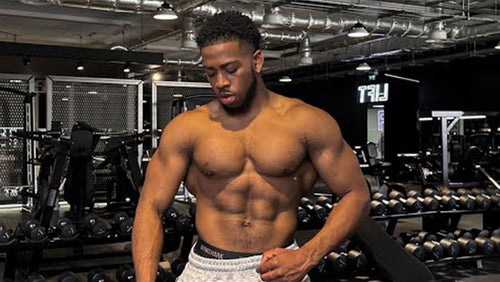
Nathaniel Massiah Workout Split
Powerlift like the European Champion himself....
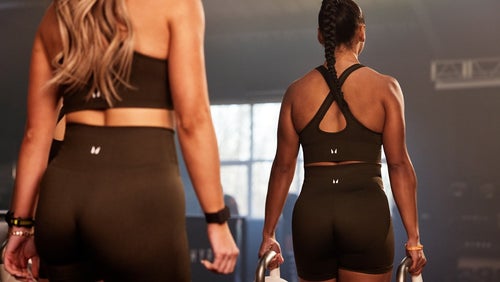
Full Week Of Training As a HYROX Athlete
Here's what a full week looks like for this HYROX champion....

